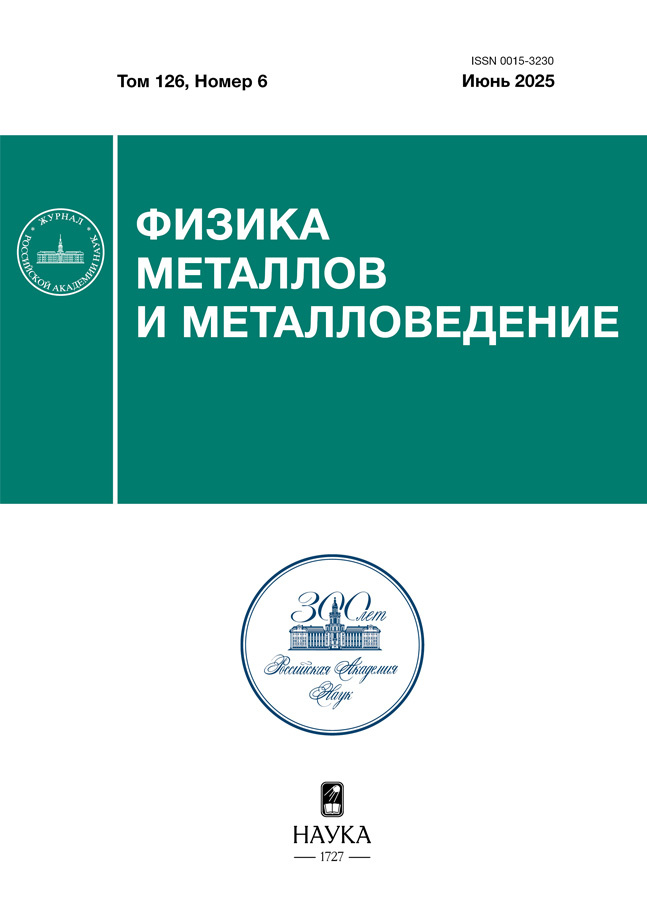Darken’s Equations for Determination of Partial Diffusion Coefficients in Multicomponent Systems
- 作者: Mosidze A.V.1, Slyusarenko E.M.1
-
隶属关系:
- Lomonosov Moscow State University
- 期: 卷 126, 编号 6 (2025)
- 页面: 721-728
- 栏目: СТРУКТУРА, ФАЗОВЫЕ ПРЕВРАЩЕНИЯ И ДИФФУЗИЯ
- URL: https://bakhtiniada.ru/0015-3230/article/view/322668
- DOI: https://doi.org/10.31857/S0015323025060101
- ID: 322668
如何引用文章
详细
The problem of determination of partial diffusion coefficients in multicomponent systems was solved in this study. Using the Darken’s hypothesis, for each component the equation for the relationship between the partial diffusion coefficients of the components Di and the interdiffusion coefficient Di determined from the concentration curve of each component in multicomponent diffusion pair was obtained. The obtained Darken’s equations coincide in form with the Onsager’s equations for multicomponent systems. It follows that for multicomponent systems n2 diffusion coefficients according to Onsager are functions of n partial diffusion coefficients of the components according to Darken. The operability of the obtained equations and methods for calculating the parameters is tested on a virtual three-component system A+B+C. The calculated values of the partial coefficients reproduce with high accuracy the initial values used to simulate the diffusion process. The technique is applied to a real Co–Mo–W system. For the first time, the partial diffusion coefficients of cobalt, molybdenum and tungsten are determined at 1373 K in the cobalt corner of the Co–Mo–W system. Partial coefficients are used to predict the interaction between cobalt alloys doped with molybdenum and tungsten. The results of the prediction are in satisfactory agreement with the experiment.
作者简介
A. Mosidze
Lomonosov Moscow State University
编辑信件的主要联系方式.
Email: alexander.mosidze@hotmail.com
GSP-1, Leninskie Gory, building 1, Moscow, 119991 Russia
E. Slyusarenko
Lomonosov Moscow State University
Email: e.slyu@hotmail.com
GSP-1, Leninskie Gory, building 1, Moscow, 119991 Russia
参考
- Fick А. Uber Diffusion // Poggendorffsche Annalen der Physik. 1855. V. 170. P. 59–86.
- Onsager L. Reciprocal Relations in Irreversible Processes // I. Phys. Rev. 1931. V. 37. P. 1405–1410; II. Phys. Rev. 1931. V. 38. P. 2265–2269.
- Fundamental and Applications of Ternary Diffusion / Proceedings of the International Symposium on Fundamental and Application of Ternary Diffusion. Hamilton. Ontario. Canada, 1990.
- Xuwen He, Weibin Zyang, Mingyuan Yan, Chong Chen, Yong Du, Lijun Zhang, Bai-yun Huang. Interdiffusivities and atomic mobilities in FCC Co–Mo–W alloys // CALPHAD. 2015. V. 49. P. 35–40.
- http://doi.org/10.1159/j.calphad.2015.02.005
- Dayananda M.A., Shon Y.H. Average effective interdiffusion coefficients and their applications in multicomponent diffusion couples // Scripta Mater. 1996. V. 35 (6). P. 683–688.
- http: // doi.org / 10.1016/1359-6462(96)00145-5
- Kirkendall E.O. Diffusion of zinc in alpha brass // Trans. AIME. 1942. V. 147. P. 104–110.
- Darken L.S. Diffusion. Mobility and Their Interpolation through Free Energy in Binary Metallic Systems // Trans. AIME. 1948. V. 175. P. 184–201.
- http: // doi.org / 10.1007/s11661-010-0177-7
- Matano C. On the Relation between the Diffusion Coefficients and Concentration of Solid Metals (The Nickel-Copper System) // Japan. J. Phys. 1933. P. 8. P. 109–113.
- Mosidze A.B., Slyusarenko E.M. Determination of Fundamental Parameters of Multicomponent systems – Partial Diffusion Coefficients of Components – using Darken’s Equations / Book of Abstracts of the XXII Congress on General and Applied Chemistry. T. 1. Federal Territory “Sirius”, 2024. P. 484.
- Mosidze A.B., Slyusarenko E.M. Virtual Model of Interdiffusion Processes in Multicomponent Systems / Book of Abstracts of the XXII Congress on General and Applied Chemistry. T. 1. Federal Territory “Sirius”, 2024. P. 483.
补充文件








